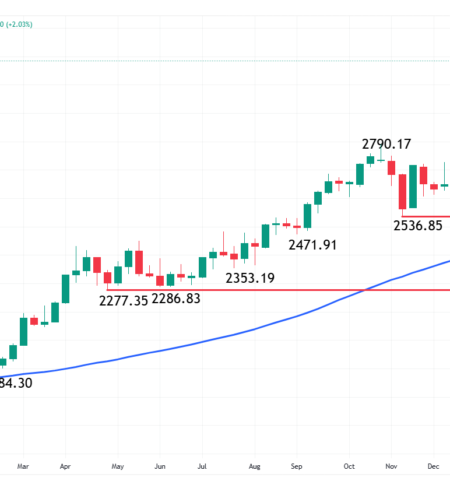Powell’s Message and the Gold Market Reaction
Federal Reserve Chair Jerome Powell’s recent address at Jackson Hole drew intense focus from global markets. Many traders had anticipated clear signals of September rate cuts, with over 80% probability priced in before the speech. However, Powell’s measured remarks created a more cautious outlook, causing immediate repositioning across assets—particularly in gold.
Powell emphasised two main factors guiding policy: inflation targets and labour market conditions. Rather than confirming the dovish expectations, he highlighted the need for patience, stressing that any rate adjustments will depend on incoming data rather than a predetermined timeline. Gold prices initially swung sharply as investors recalibrated their expectations.
Interest Rates and Gold’s Inverse Relationship
Gold’s performance is closely tied to interest rate outlooks. Lower rates reduce the opportunity cost of holding non-yielding assets like gold, boosting demand. Conversely, delayed or smaller-than-expected cuts can restrain short-term price growth.
Mining equities often respond even more strongly than physical gold. Small-cap miners, with thinner margins and higher financing needs, can see valuations rise dramatically in easier monetary conditions. Rate cuts also lower borrowing costs across the mining sector, improving project viability and profitability.
Latest Gold Price Forecasts
Despite Powell’s cautious tone, analysts remain bullish on gold’s medium-term trajectory:
UBS now forecasts gold at $3,700 per ounce by 2026, up from earlier projections.
The bank expects an average of $3,600 in Q1 next year, driven by robust central bank demand and renewed ETF inflows.
Central banks remain on track for annual purchases near 1,000 tonnes, showing resilience in diversifying away from dollar reserves.
Demand and Market Drivers
Institutional and central bank buying continues to underpin gold prices. Global demand could rise by 3% next year, potentially reaching levels last seen in 2011. Renewed ETF activity suggests stronger retail engagement may follow.
Macroeconomic uncertainty—including inflation, geopolitical risks, and currency devaluation—further strengthens gold’s role as a safe-haven asset.
Outlook
While Powell’s Jackson Hole speech injected short-term caution into markets, the long-term fundamentals for gold remain highly supportive. Central bank buying, robust institutional demand, and persistent economic uncertainty continue to provide a powerful case for higher gold prices. For investors, the path ahead may see volatility, but the overall direction for gold looks increasingly upward.


